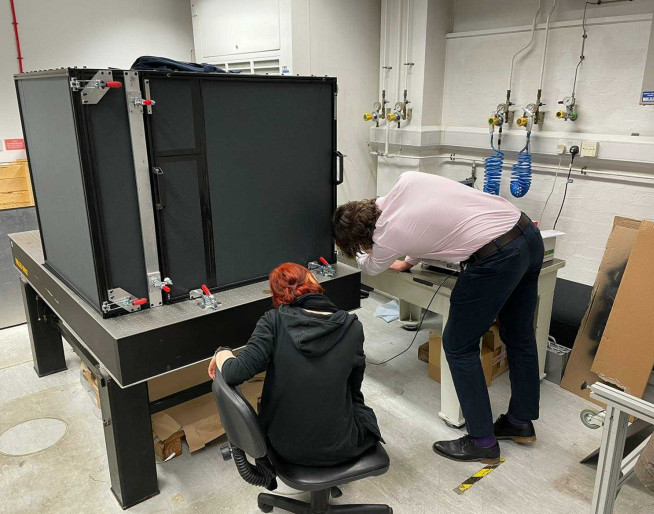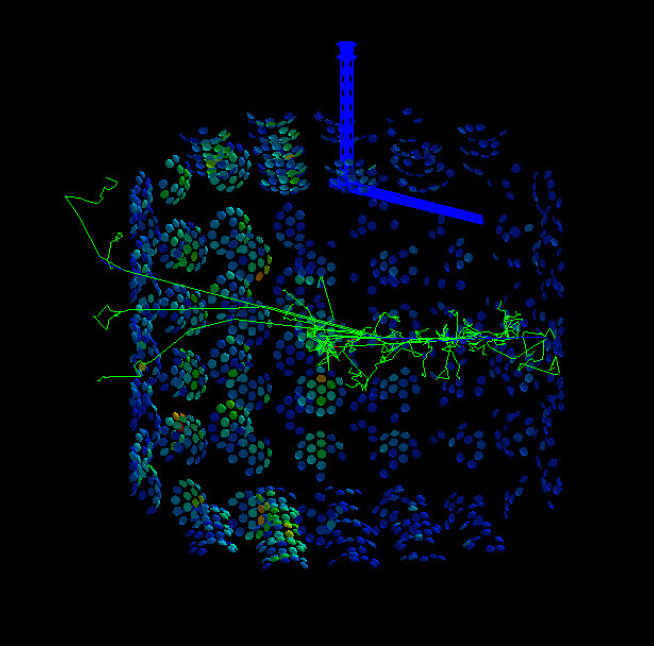Imperial currently leads the oscillation analysis and intermediate water Cherenkov detector physics groups. Imperial students are now analysing the sensitivity HK can achieve for oscillation physics, with a focus on the application of the ν-PRISM analysis technique to HK. This technique uses the energy dependence of the off-axis neutrino beam to better understand the neutrino cross-section. Linear combinations of off-axis neutrino beams allow us to create almost any desired neutrino flux shape. This opens the door to truly unique analysis possibilities, from energy dependent neutral current cross-sections to sterile neutrino searches to oscillation analyses without neutrino interaction models.
The group is also producing the primary calibration system of IWCD, a laser diffuser that can distribute uniform laser light across the full IWCD detector from any point within the detector. This is joined by the UniConeEx device, a quartz cylinder that diffracts laser light to produce a ring that mimics the Cherenkov light from a muon. Together these calibration systems will be used to reduce the detector uncertainties at IWCD to the 1% level, allowing the ambitious physics program to succeed.

